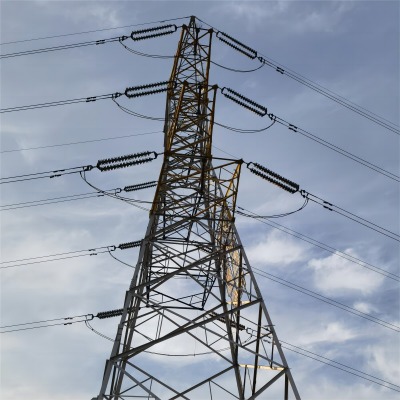Key Differences between Steel Grades Q235, Q355 and Q420 in Transmission Project
Dec 27, 2023
Here is a comparison of the key differences between steel grades Q235, Q355, and Q420 used in transmission tower manufacturing:
①Yield Strength - This indicates the stress needed to permanently deform the steel. Q235 has a yield strength of 235 MPa, Q355 has 355 MPa, and Q420 has 420 MPa. The higher the yield strength, the more load the steel can withstand before bending.
②Tensile Strength - This is the maximum stress the steel can withstand before breaking. The tensile strength follows a similar pattern - Q235 at 375-500 MPa, Q355 at 510-650 MPa, and Q420 at 550-720 MPa.
③Density - Q235 has a density of 7.85 g/cm3, Q355 is 7.85 g/cm3, and Q420 is 7.85 g/cm3. The density is nearly identical.
④Composition - Q235 has lower carbon content (~0.12%) compared to Q355 (~0.20%) and Q420 (~0.25%). The additional carbon increases strength.
⑤Durability - Q420 has the best corrosion resistance and longevity as higher grades are more resilient. Q235 corrodes faster.
⑥Weldability - Q235 is the easiest to weld, while Q420 is more complicated requiring skilled welding to avoid brittle joints. Q355 is moderately weldable
⑦Cost - Q235 is the most affordable option while Q420 is more expensive due to advanced production processes required. Q355 falls in the middle.
⑧Availability - Q235 steel is the most commonly produced and available grade. Q355 has moderate availability while Q420 may have longer lead times.
In summary, Q420 provides the highest strength but is costlier and harder to weld, while Q235 is most affordable but has lower strength. Q355 offers a middle ground in many respects.
Tel: +86 532 55578185
E-mail: alttower88.com



